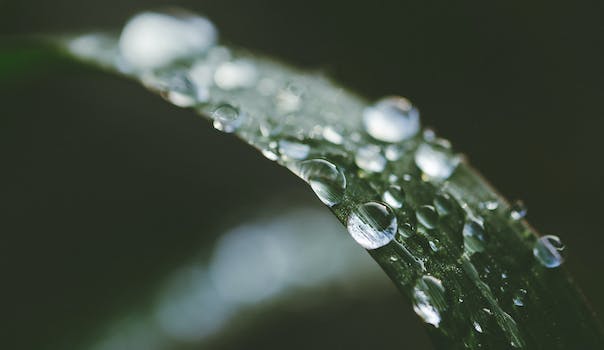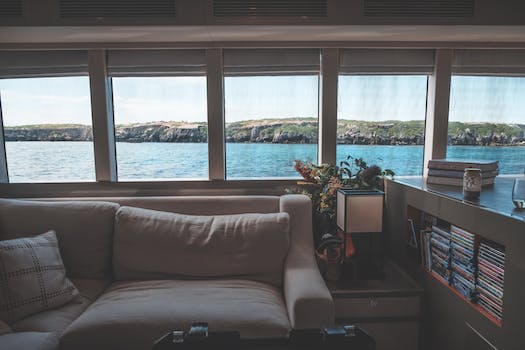How To Live Off Grid Cheap
“Living off the grid doesn’t have to break the bank – discover affordable ways to embrace a sustainable lifestyle.”
Introduction
Living off-grid can be an appealing lifestyle for those who want to reduce their carbon footprint, become more self-sufficient, or simply enjoy a simpler way of life. However, it can also be expensive to set up and maintain. In this article, we will explore some tips and tricks for living off-grid on a budget.
10 Tips for Building a Low-Cost Off-Grid Home
Living off the grid can be a great way to reduce your carbon footprint and live a more sustainable lifestyle. However, building an off-grid home can be expensive, and many people assume that it’s out of their budget. The good news is that it’s possible to build a low-cost off-grid home with a little bit of planning and creativity. Here are ten tips for building a low-cost off-grid home.
1. Choose the Right Location
The first step in building a low-cost off-grid home is to choose the right location. Look for a location that has plenty of sunlight, access to water, and good soil for gardening. You’ll also want to consider the climate and weather patterns in the area. Choosing the right location can help you save money on heating and cooling costs.
2. Use Recycled Materials
Using recycled materials is a great way to save money on building materials. Look for materials that can be salvaged from old buildings or construction sites. You can also use recycled materials for insulation, flooring, and roofing.
3. Build a Small Home
Building a small home is another way to save money on building costs. A smaller home requires less building materials and is easier to heat and cool. You can also save money on property taxes and maintenance costs with a smaller home.
4. Use Alternative Energy Sources
Using alternative energy sources like solar panels or wind turbines can help you save money on energy costs. These systems can be expensive to install, but they can pay for themselves over time. You can also look for government incentives or tax credits to help offset the cost of installation.
5. Build a Passive Solar Home
Building a passive solar home is another way to save money on heating and cooling costs. A passive solar home is designed to capture and store sunlight during the day and release it at night. This can help reduce the need for heating and cooling systems.
6. Use Natural Building Materials
Using natural building materials like straw bales or adobe can help you save money on building costs. These materials are often cheaper than traditional building materials and can be sourced locally.
7. Build a Composting Toilet
Building a composting toilet is a great way to save money on water and sewage costs. Composting toilets use little to no water and can turn waste into compost that can be used in your garden.
8. Install a Rainwater Harvesting System
Installing a rainwater harvesting system can help you save money on water costs. These systems collect rainwater from your roof and store it for later use. You can use the water for gardening, washing clothes, or even drinking if you have a filtration system.
9. Grow Your Own Food
Growing your own food is a great way to save money on groceries. You can start a garden and grow vegetables, fruits, and herbs. You can also raise chickens or other livestock for meat and eggs.
10. DIY as Much as Possible
Finally, DIY as much as possible to save money on labor costs. You can learn how to build your own furniture, install your own solar panels, or even build your own home. There are plenty of resources available online to help you learn new skills.
In conclusion, building a low-cost off-grid home is possible with a little bit of planning and creativity. By choosing the right location, using recycled materials, building a small home, using alternative energy sources, building a passive solar home, using natural building materials, building a composting toilet, installing a rainwater harvesting system, growing your own food, and DIYing as much as possible, you can save money and live a more sustainable lifestyle.
Frugal Living: How to Save Money Off the Grid

Living off the grid can be a great way to save money and live a more sustainable lifestyle. However, it can also be expensive if you don’t know how to do it right. In this article, we’ll explore some tips and tricks for living off the grid cheaply.
First and foremost, it’s important to understand what living off the grid means. Essentially, it means living without relying on public utilities like electricity, water, and gas. Instead, you generate your own power, collect your own water, and use alternative methods for heating and cooking.
One of the biggest expenses when living off the grid is generating power. Solar panels are a popular option, but they can be expensive to install. However, there are ways to save money on solar panels. For example, you can buy used panels or look for deals on new ones. You can also build your own solar panels if you’re handy with tools.
Another way to save money on power is to use less of it. This means being mindful of your energy usage and finding ways to conserve. For example, you can use energy-efficient light bulbs, turn off appliances when not in use, and use natural light instead of artificial light whenever possible.
When it comes to water, collecting rainwater is a great way to save money. You can set up a rainwater collection system using barrels or other containers. This water can be used for everything from watering plants to flushing toilets.
Heating and cooking can also be expensive when living off the grid. One option is to use a wood stove for both heating and cooking. This can be a cost-effective solution, as long as you have access to firewood. You can also use a propane stove for cooking, which is more efficient than an electric stove.
Another way to save money when living off the grid is to grow your own food. This can be done in a garden or greenhouse, depending on your climate. By growing your own food, you can save money on groceries and also ensure that your food is fresh and healthy.
Finally, it’s important to be mindful of your overall lifestyle when living off the grid. This means being frugal and avoiding unnecessary expenses. For example, you can save money by buying used items instead of new ones, repairing things instead of replacing them, and avoiding expensive hobbies and activities.
Living off the grid can be a great way to save money and live a more sustainable lifestyle. However, it does require some upfront investment and ongoing maintenance. By following these tips and tricks, you can live off the grid cheaply and enjoy the many benefits of this lifestyle.
DIY Solar Power: A Beginner’s Guide to Off-Grid Energy
Living off the grid can be a great way to save money and reduce your carbon footprint. However, it can also be expensive to set up and maintain. One of the biggest expenses is energy. Fortunately, there are ways to generate your own energy without breaking the bank. In this article, we will discuss how to live off grid cheap by using DIY solar power.
Solar power is a great option for off-grid living because it is renewable, reliable, and easy to maintain. The initial cost of setting up a solar power system can be high, but it pays off in the long run. You can save money on your energy bills and reduce your reliance on fossil fuels.
Before you start building your solar power system, you need to determine your energy needs. This will help you determine the size of the system you need. You can calculate your energy needs by looking at your past energy bills or by using an online calculator.
Once you know your energy needs, you can start building your solar power system. The first step is to choose the right solar panels. There are two types of solar panels: monocrystalline and polycrystalline. Monocrystalline panels are more efficient but also more expensive. Polycrystalline panels are less efficient but more affordable. You can choose the type that fits your budget and energy needs.
Next, you need to choose a charge controller. A charge controller regulates the amount of energy that goes into your battery bank. It prevents overcharging and extends the life of your batteries. You can choose a PWM (pulse width modulation) or MPPT (maximum power point tracking) charge controller. MPPT controllers are more efficient but also more expensive.
After you have chosen your solar panels and charge controller, you need to choose a battery bank. A battery bank stores the energy generated by your solar panels. You can choose between lead-acid and lithium-ion batteries. Lead-acid batteries are cheaper but have a shorter lifespan. Lithium-ion batteries are more expensive but last longer and require less maintenance.
Once you have all the components, you can start building your solar power system. You need to connect your solar panels to your charge controller, and your charge controller to your battery bank. You also need to connect your battery bank to an inverter. An inverter converts the DC (direct current) energy stored in your battery bank into AC (alternating current) energy that you can use to power your appliances.
When building your solar power system, it is important to follow the manufacturer’s instructions and safety guidelines. If you are not comfortable with electrical work, you should hire a professional to install your system.
In addition to building your solar power system, there are other ways to reduce your energy consumption and live off grid cheap. You can use energy-efficient appliances, such as LED lights and low-flow showerheads. You can also use passive solar design to heat and cool your home. Passive solar design uses the sun’s energy to heat and cool your home naturally, without the need for mechanical systems.
Living off the grid can be a rewarding experience. It allows you to be self-sufficient and reduce your impact on the environment. By using DIY solar power, you can generate your own energy and save money in the long run. With the right components and a little bit of know-how, you can live off grid cheap and enjoy the benefits of renewable energy.
Growing Your Own Food: Sustainable Agriculture on a Budget
Living off the grid can be a great way to reduce your carbon footprint and live a more sustainable lifestyle. However, it can also be expensive if you don’t know how to do it right. One of the best ways to save money when living off the grid is by growing your own food. Sustainable agriculture on a budget is not only possible, but it can also be a fun and rewarding experience.
The first step to growing your own food is to choose the right location. You want to find a spot that gets plenty of sunlight and has good soil. If you don’t have access to good soil, you can create your own by composting. Composting is a great way to turn food scraps and yard waste into nutrient-rich soil. You can also use raised beds or containers if you don’t have a lot of space.
Once you have your location, it’s time to start planning your garden. You want to choose plants that are easy to grow and that will provide you with a lot of food. Some good options include tomatoes, peppers, cucumbers, zucchini, and beans. You can also grow herbs like basil, parsley, and cilantro. These plants are easy to grow and can be used in a variety of dishes.
When it comes to planting, you want to make sure you’re doing it at the right time. Different plants have different planting times, so it’s important to do your research. You also want to make sure you’re spacing your plants correctly. Overcrowding can lead to disease and pests.
One of the best things about growing your own food is that you can save money on groceries. However, it’s important to remember that gardening does require some investment. You’ll need to buy seeds, soil, and tools. However, these costs can be minimized by buying in bulk and looking for deals.
Another way to save money is by preserving your harvest. Canning, freezing, and dehydrating are all great ways to make your food last longer. You can also share your harvest with friends and family or sell it at a local farmers market.
In addition to saving money, growing your own food is also good for the environment. You’re reducing your carbon footprint by not relying on food that has been shipped from far away. You’re also reducing the amount of waste that goes into landfills by composting.
Overall, sustainable agriculture on a budget is a great way to live off the grid cheaply. By growing your own food, you can save money on groceries, reduce your carbon footprint, and live a more sustainable lifestyle. It does require some investment, but the rewards are well worth it. So, grab your gardening gloves and get started on your own sustainable garden today!
Off-Grid Water Solutions: Harvesting and Purifying Rainwater
Living off the grid can be a great way to reduce your carbon footprint and live a more sustainable lifestyle. However, it can also be expensive if you don’t know how to do it right. One of the biggest expenses when living off the grid is water. Fortunately, there are ways to harvest and purify rainwater that can help you live off the grid cheaply.
Harvesting rainwater is a simple and effective way to collect water for your off-grid needs. All you need is a collection system that can capture rainwater and store it for later use. There are many different types of collection systems available, from simple rain barrels to more complex systems that can collect and store large amounts of water.
When choosing a collection system, it’s important to consider your needs and the amount of rainfall in your area. If you live in a dry climate, you may need a larger collection system to ensure that you have enough water to meet your needs. If you live in an area with heavy rainfall, a smaller system may be sufficient.
Once you have collected your rainwater, it’s important to purify it before using it for drinking, cooking, or bathing. There are many different methods for purifying rainwater, including boiling, filtration, and chemical treatment.
Boiling is one of the simplest and most effective ways to purify rainwater. Simply bring the water to a boil for at least one minute, then let it cool before using it. This will kill any bacteria or viruses that may be present in the water.
Filtration is another effective way to purify rainwater. There are many different types of filters available, from simple ceramic filters to more complex systems that use multiple stages of filtration. When choosing a filter, it’s important to consider the size of the particles you want to remove and the flow rate of the filter.
Chemical treatment is another option for purifying rainwater. There are many different chemicals that can be used to treat water, including chlorine, iodine, and hydrogen peroxide. When using chemical treatment, it’s important to follow the instructions carefully and to use the correct amount of chemical for the amount of water you are treating.
In addition to harvesting and purifying rainwater, there are other ways to conserve water when living off the grid. One of the simplest ways is to use low-flow fixtures, such as low-flow showerheads and faucets. These fixtures can help you save water without sacrificing comfort or convenience.
Another way to conserve water is to reuse greywater. Greywater is the water that comes from sinks, showers, and washing machines. While it’s not safe for drinking, it can be used for watering plants or flushing toilets. There are many different systems available for collecting and treating greywater, from simple buckets to more complex systems that use filters and pumps.
Living off the grid can be a great way to reduce your carbon footprint and live a more sustainable lifestyle. By harvesting and purifying rainwater, conserving water, and using other sustainable practices, you can live off the grid cheaply and comfortably. With a little bit of planning and effort, you can enjoy the benefits of off-grid living without breaking the bank.
Conclusion
Conclusion: Living off-grid can be an affordable lifestyle choice, but it requires careful planning and a willingness to make sacrifices. By reducing energy consumption, growing your own food, and using alternative sources of power, you can live a sustainable and self-sufficient life without breaking the bank. However, it’s important to remember that living off-grid is not for everyone and may require significant lifestyle changes.




